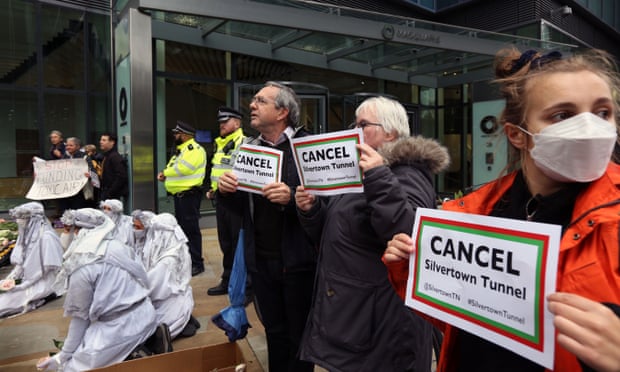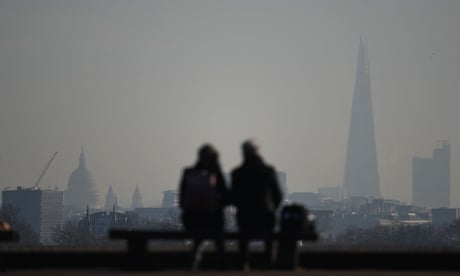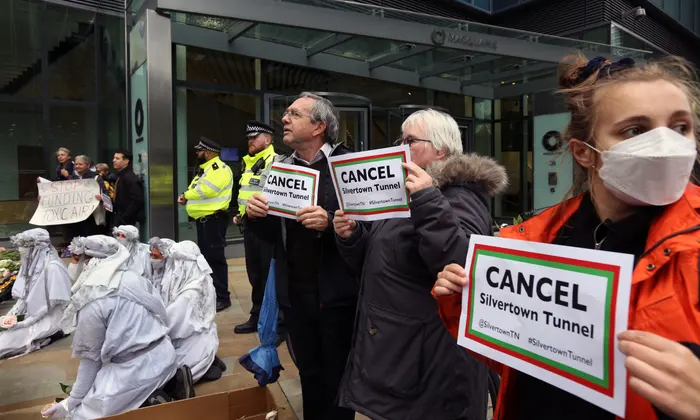A Guardian comment piece on the Silvertown Tunnel.
He risks ruining his legacy for a project that will bring more pollution to some of London’s worst-hit areas

‘I am the first green mayor of London,” Sadiq Khan proclaimed last year during the UN Climate Change Conference in Glasgow. The Labour party mayor has built a reputation for tackling air pollution. In 2019, he introduced ultra-low emission zones in the nation’s capital. New cycle infrastructure has appeared throughout the city, alongside cycling training courses, and London is brimming with electric buses. It’s no surprise that since 2016, the year Khan was elected, air pollution in London has plunged dramatically.
So it makes little sense that Khan has refused to reverse the Silvertown tunnel. The 1.4km twin-bore road tunnel under the Thames is due for completion in 2025 and will connect the boroughs of Greenwich and Newham. The project is a Johnson mayoral-era solution to the severe delays at the Blackwall tunnel that links Greenwich to Tower Hamlets. TfL claims that the Silvertown tunnel will “help reduce the environmental impact of traffic congestion on some of London’s most polluted roads”, but Greenwich and Newham locals argue that it will do the exact opposite, bringing more pollution to the area.

Research backs up this claim: building big new roads almost always leads to more traffic – something the mayor’s own commissioned experts said must be reduced by 27% to achieve net zero in London by 2030. “That’s more than a quarter of London’s traffic being stopped,” Simon Pirani, an energy researcher and a local organiser for the Stop Silvertown campaign, told me recently. “Isn’t that going to solve the congestion of the Blackwall tunnel? That is the only reason we’ve ever heard for building the Silvertown tunnel.”
The £2bn tunnel seems even more bizarre when you tally its enormous environmental, financial and public health costs. A 2020 report found that the materials required alone would release 82,077 tonnes of CO2 into the atmosphere – a huge figure that doesn’t even account for additional transportation, waste and road construction. Previous plans revealed that more than 100 trees would be felled to make way for the tunnel, yet this proposal was swiftly withdrawn in the face of opposition. Campaigners still fear that a barrage of other, smaller planning applications could eventually lead to a large number of trees being destroyed.
As if this wasn’t bad enough, traffic from the Silvertown tunnel will bring more pollution to an already-deprived part of the city. Newham is one of the most ethnically diverse boroughs: over 70% of its residents belong to Black, Asian and other ethnically diverse groups. Some parts of Newham are among the poorest in England. Half of the children in the borough live in poverty and 30% of local jobs don’t pay the London Living Wage.
Opponents of the tunnel aren’t surprised the project is taking place here. They say its construction is an example of environmental racism – of minority groups unequally bearing the brunt of pollution and environmental degradation. Evidence shows that people from Black, Asian and ethnically diverse groups suffer the worst environmental conditions. The average Black person in the UK is exposed to 27.25micrograms a cubic metre of harmful pollutant PM10, which is over 28% higher than the average urban white person, while Black people in England are nearly four times as likely as white people to have no access to outdoor space at home.
Every year, air pollution is responsible for up to 36,000 deaths in the UK. These numbers are more concentrated in areas such as Newham, Greenwich and Tower Hamlets, given the levels of destitution and high exposure to busy roads. A 2019 report found that up to 35% of areas with the highest proportion of Black and mixed/multiple ethnicities were in places with higher levels of air pollution. East London is already home to London City airport and London’s new sewage tunnel (due for completion in 2025), which will run through the borough of Newham. East London’s rivers are also some of the most polluted in the country.
In June, the Stop Silvertown Tunnel Coalition held a summit with experts to discuss the disastrous impact the project will have on public health. John Whitelegg, professor of Sustainable Transport at John Moore’s University, insisted that if the tunnel is built, locals would face a higher risk of road death and that increased noise and air pollution would damage their children’s cognitive and lung development. This will generally harm the community’s health and increase the risk of premature death. As it stands, Newham’s premature mortality rate is already worse than London’s average.
Even more shockingly, people in Newham and surrounding areas will also have to pay for the tunnel out of their pockets. Its construction, operation and maintenance costs will be covered by a user toll for 25 years. While they pay, the private companies and investors that make up the RiverLinx Consortium to design, build, finance and maintain the tunnel stand to benefit.
The construction of the tunnel has already begun. Last month, the boring machine was lowered into the launch chamber. But campaigners insist that it’s not too late for the mayor to halt the project at the 11th hour, as the work so far has been preparatory. The boring machine could be sold for use elsewhere. “They’re still lowering the bits down. They haven’t started boring yet,” Pirani says. “The mayor could come to his senses and say, ‘Guys, can you pause while we review the thing and see whether it’s a good idea.’ From our point of view, we’re in this bad situation where the digging is definitely getting closer, but it still hasn’t started.”
Khan has two roads ahead of him: stubbornly refuse to reverse the project and ruin his legacy as a “green mayor” or do the right thing by halting construction. For the people of Newham, his choice is a matter of life and death.
- Diyora Shadijanova is a journalist and writer


